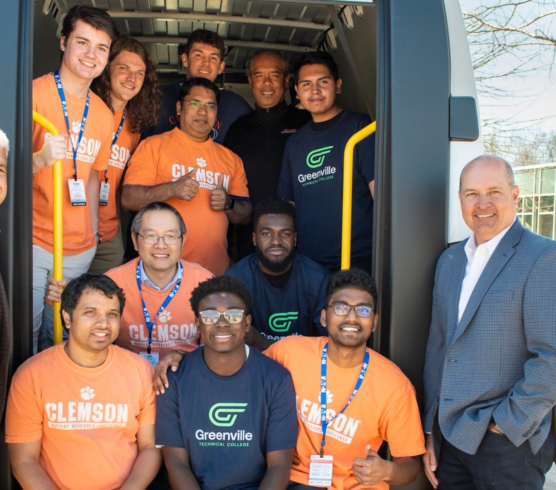At the start of Year 3, the Wayne State Hybrid Warriors wanted to focus on developing a fully functional electric drive. This task was essential to meeting the EcoCAR 2 technical goals. One major part of achieving a fully functional electric drive was the setup and fine-tuning of the team’s motor control unit (MCU). In order to tackle the task, the team needed to get their hands on a motor dynamometer that would allow them to do testing. Fortunately, the University gave them access to a motor dyno that was conveniently located in the same building as the team’s garage.
Testing on a motor dyno allowed the team to test their motor with the MCU outside of the vehicle. This gave the team the chance to validate their motor control strategy. Because the motor dyno was originally set up to be used with a different MCU and motor combination, a special mounting plate and motor shaft coupling needed to be machined. Additionally, new brackets were fabricated to hold the cooling components required by the team’s oil-cooled traction motor.
All the oil cooling components had to be mounted and connected to the modified dyno setup because the original only included water-based cooling components. Once installed, the team was able to validate the current component packaging and accurately measure the flow rates of the oil feed and scavenge pumps. During this validation, additional testing was performed to determine the appropriate coolant plumbing configuration needed for operation. Though the team orignially preferred a dual sump setup because it used off the shelf components, in testing the additional plumbing and associated difficulties maintaining oil levels outweighed the benefits. The team is currently looking to have a custom single sump manufactured.
The team’s newly modified motor dynoOnce all the plumbing, mounting and wiring work was complete, it was time to run through the manufacturer-supplied setup and calibration procedure for the MCU. High voltage calibration of the MCU required DC voltage levels of 250 and 400, which was within the limits of the dyno equipment but just beyond the limits of the team’s battery pack (263 to 378 volts DC). One major hurdle encountered during the commissioning process was the discovery of a bad current sensor in the MCU. Resolving this problem required a fair amount of correspondence with the manufacturer. Expedited shipping of a new part helped minimize the impact on the project.
Overall, motor dyno testing has provided the Hybrid Warriors an excellent opportunity to work together as a cross functional team.



